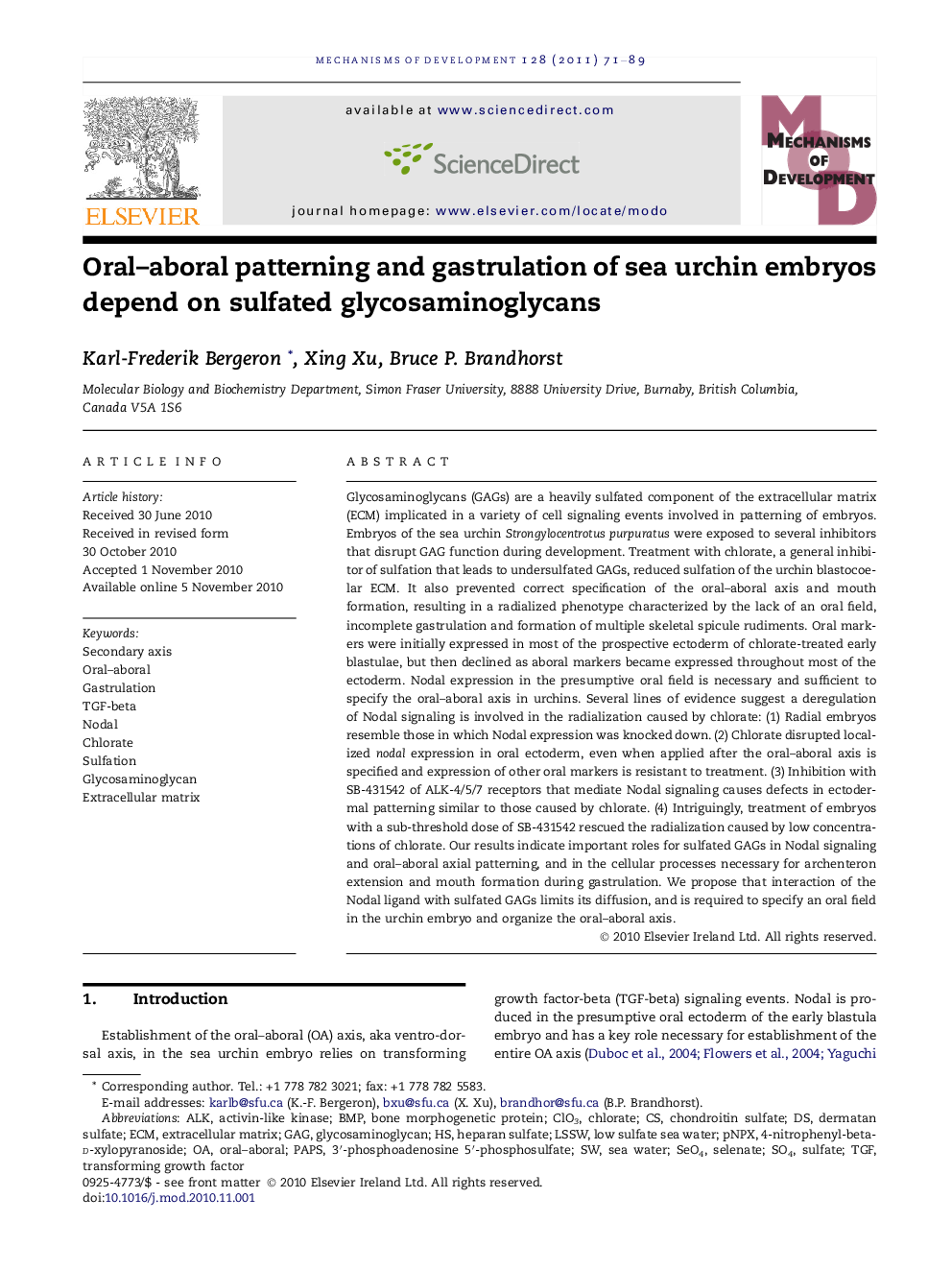| کد مقاله | کد نشریه | سال انتشار | مقاله انگلیسی | نسخه تمام متن |
|---|---|---|---|---|
| 2194935 | 1550594 | 2011 | 19 صفحه PDF | دانلود رایگان |

Glycosaminoglycans (GAGs) are a heavily sulfated component of the extracellular matrix (ECM) implicated in a variety of cell signaling events involved in patterning of embryos. Embryos of the sea urchin Strongylocentrotus purpuratus were exposed to several inhibitors that disrupt GAG function during development. Treatment with chlorate, a general inhibitor of sulfation that leads to undersulfated GAGs, reduced sulfation of the urchin blastocoelar ECM. It also prevented correct specification of the oral–aboral axis and mouth formation, resulting in a radialized phenotype characterized by the lack of an oral field, incomplete gastrulation and formation of multiple skeletal spicule rudiments. Oral markers were initially expressed in most of the prospective ectoderm of chlorate-treated early blastulae, but then declined as aboral markers became expressed throughout most of the ectoderm. Nodal expression in the presumptive oral field is necessary and sufficient to specify the oral–aboral axis in urchins. Several lines of evidence suggest a deregulation of Nodal signaling is involved in the radialization caused by chlorate: (1) Radial embryos resemble those in which Nodal expression was knocked down. (2) Chlorate disrupted localized nodal expression in oral ectoderm, even when applied after the oral–aboral axis is specified and expression of other oral markers is resistant to treatment. (3) Inhibition with SB-431542 of ALK-4/5/7 receptors that mediate Nodal signaling causes defects in ectodermal patterning similar to those caused by chlorate. (4) Intriguingly, treatment of embryos with a sub-threshold dose of SB-431542 rescued the radialization caused by low concentrations of chlorate. Our results indicate important roles for sulfated GAGs in Nodal signaling and oral–aboral axial patterning, and in the cellular processes necessary for archenteron extension and mouth formation during gastrulation. We propose that interaction of the Nodal ligand with sulfated GAGs limits its diffusion, and is required to specify an oral field in the urchin embryo and organize the oral–aboral axis.
Journal: Mechanisms of Development - Volume 128, Issues 1–2, January–February 2011, Pages 71–89